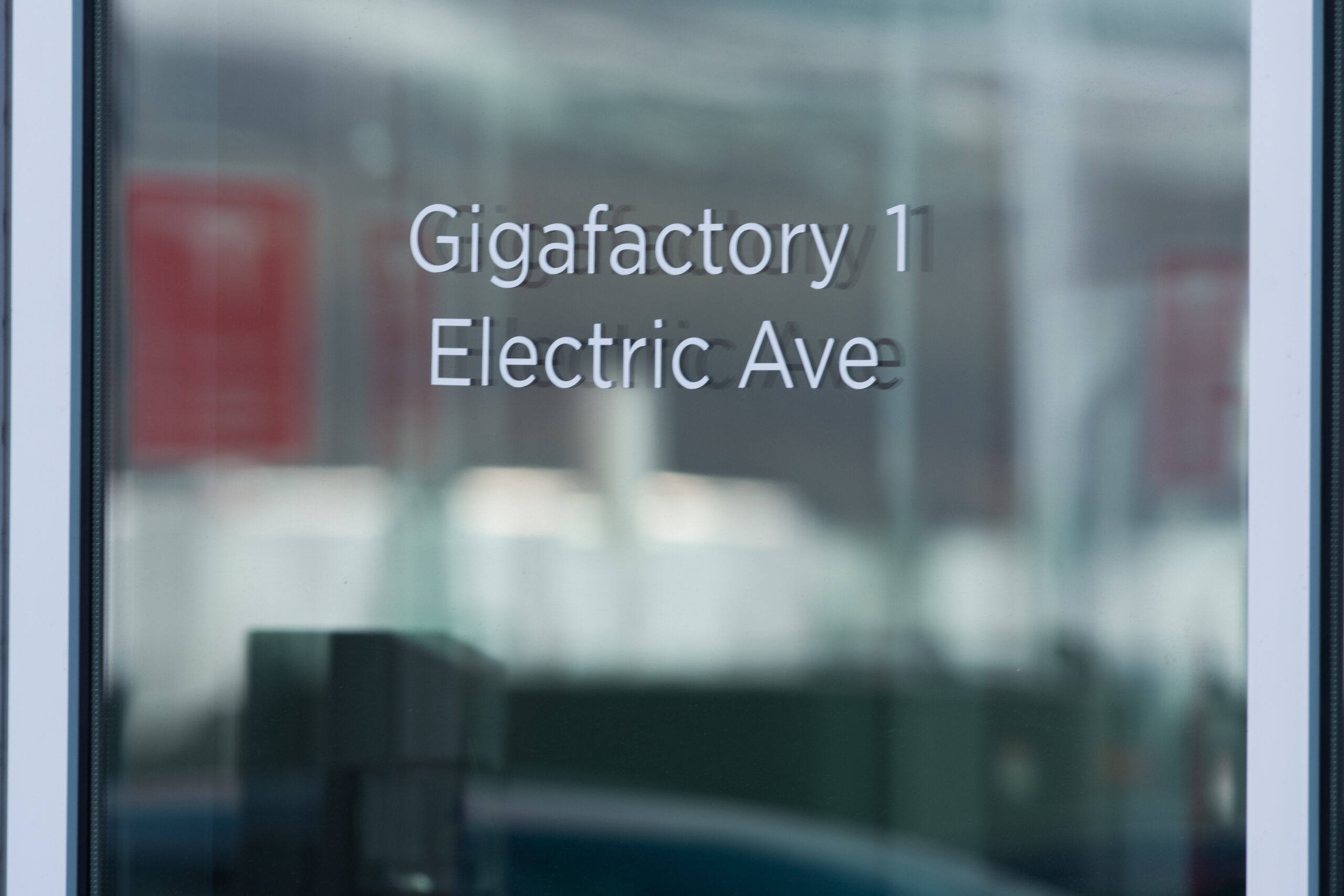$330 million in tax abatements won’t make Tesla Northern Nevada’s first truck builder

Publicly subsidized stadiums and film studios are getting all of the attention these days, especially since their need for full legislative approval is drawing every midlevel legislator to speak on something that a majority of their constituents might have an actual opinion on.
Neither of those tax breaks, however, were the first multihundred-million dollar tax break handed out by our unusually flush state government this year. No, our state’s first tax break of the season was a 20-year, $330 million abatement granted administratively to Tesla to build electric semitrucks in the hills east of Reno. The Legislature wasn’t involved at all in granting that particular one — much to its visible annoyance.
Though few would list Reno in the same annals of American automotive manufacturing history as Detroit, Kenosha or South Bend, the Gigafactory’s expansion will not mark Reno’s first foray into the industry. It won’t, in fact, even be the first time a manufacturer approached the local business community, hat in hand, and asked for money to build a new, cutting-edge truck east of town.
Those firsts happened just over a century ago, all thanks to an inventor-turned-entrepreneur from Biddeford, Maine, named Henry H. Gove.
Biddeford is a modestly sized textile town just north of the Bush Compound in Kennebunkport, Maine. To presumably assist his neighbors in their town’s industry efforts, Gove patented several potentially useful inventions for use in textile factories. Gove’s first recorded patent, for example, was issued in 1903 for a device for patching rubber boots. He also filed patents, individually and jointly with other inventors, on improvements in various components used by looms of the era, including thread-tension devices, shuttles, weft-replenishing mechanisms, and feeler mechanisms.
Some of Gove’s patents, on the other hand, had little to do with textiles. One of his earliest patents was for a machine that could handle indestructible tickets — the idea being that movie theaters produced too much waste with disposable paper tickets. In 1915, he also submitted a design patent for a rather unique flushing device.
The patents that ultimately led to the creation of Gove Motor Co., however, focused on the development of rotary valves for internal combustion engines.
Even today, over a century after Gove patented his engine, rotary valves are seldom used in internal combustion engines, though a few manufacturers use them in certain high-performance niches. Modern cars instead use poppet valves, which were first invented for and installed into steam engines. Even by Gove’s time, poppet valves were already decades-old technology, potentially ripe for replacing.
The poppet valves developed for steam engines had some serious drawbacks when installed into early internal combustion engines. Steam, being water vapor, is far cooler than the exhaust created when gasoline or diesel fuel is ignited — consequently, early poppet valves deformed under routine use and required monthly removal, regrinding, and reinstallation. Additionally, poppet valves weren’t originally designed to operate at high engine speeds. Consequently, engines under stress could “float the valves” — meaning they could, often at the risk of severe damage, run faster than the valve springs could recover position. Poppet valves also aren’t as inherently mechanically efficient as other valve designs, rotary valves included.
On the other hand, poppet valves, being steam engine technology, were (and remain today) well understood by engineers and manufacturers. Consequently, in the context of 1910s-era engine design, attempting to replace steam engine-era valve technology with a more modern design was a high-risk proposition — but one which had some obvious rewards if it could be pulled off successfully.
Gove, fancying himself a bit of an entrepreneur, decided the best way to show off his new and novel engine design was to install his engine in a series of eponymic trucks. This, however, required a business plan — and capital.
Back in the 1910s, the way aspiring truck manufacturers with cutting-edge engines raised capital was not by asking for tax rebates from state and local governments, in no small part because state and local governments didn’t raise much money in taxes to begin with (the Sixteenth Amendment, which permits Congress to levy income taxes, wasn’t ratified until 1913). Instead, Gove had to ask people to voluntarily part with their money.
So he did.
His pitch: Give him money and he’ll make you a shareholder in the new Gove Motor Co. factory he wanted to build in your town. Your town, in fact, would become home to the main factory.
This pitch was given to Denver, where he built a factory in 1918. Then he built another factory in Fremont, Nebraska, another in Pocatello, Idaho, yet another in Brighton, Michigan — and, yes, one in Reno, Nevada.
Which factory was the main factory? Great question — one which subsequent communities started to get a little wise to, especially since the precise geographical location of Gove Motor Co.’s home base seemed to depend on who was asking. Were they based in Biddeford, Maine, as they told the U.S. Patent Office? Or were they based in Detroit — the early 20th century automotive startup equivalent of Silicon Valley — as they told potential investors in Elmira, New York?
If all of this is starting to sound a little fishy, it probably won’t help to point out that Gove Motor Co. advertised the sale of stocks in its new factories far more aggressively (and, ah, racistly) than it ever advertised its trucks.
Then, on Oct. 29, 1920, tragedy struck: Henry H. Gove accidentally shot and killed himself while partridge hunting.
Meanwhile, the Depression of 1920-1921 — an economic hangover triggered by the end of World War I and the subsequent influenza pandemic — was in full swing, causing speculator dollars to become harder and harder to come by. By early 1921, Gove Motor Car Co. (“Car” was added to the company’s name at some point in 1920) was publishing ads in the Reno Evening Gazette reassuring everyone that it had “rapidly increasing assets and practically no liabilities.”
A year later, the company was officially bankrupt. The company’s assets, including the factory and the land it sat on, were auctioned off roughly a month later by the sheriff. Fittingly enough, the lot the factory was built on is now home to a salvage company.
Gove Motor Co. didn’t just build factories, though it certainly left a few of those scattered throughout the country. According to the Brighton Area Historical Society, at least one photo of a Gove truck was taken — directly in front of the Capitol building in Carson City. Unfortunately, the trucks weren’t very reliable. An attempt was made to drive a few trucks from Brighton to Detroit — a 50 mile drive. They all broke down before reaching their destination.
With the benefit of hindsight, we now know that Gove’s engine was likely fatally flawed. Even with the benefit of cutting edge 21st century metallurgy, rotary valves remain difficult to engineer, manufacture and operate reliably due to challenges inherent in the design. It’s possible Gove, not realizing the scope of the technical challenges ahead of him, hoped he’d iron out the problems with his design as he manufactured more trucks. Then again, Elizabeth Holmes, convicted founder of Theranos, would likely tell you something similar if you asked her about her failed business, too.
The good news, at least for Nevada’s taxpayers, is history will likely remember Tesla’s effort to build trucks in Northern Nevada more positively than Gove’s. What remains to be seen, however, is whether anyone with a century’s worth of hindsight will think they were worth the investment we’re about to place in them.
David Colborne ran for office twice. He is now an IT manager, the father of two sons, and a weekly opinion columnist for The Nevada Independent. You can follow him on Mastodon @DColborne@techhub.social, on Twitter @DavidColborne, or email him at david@colbornemmx.com.
